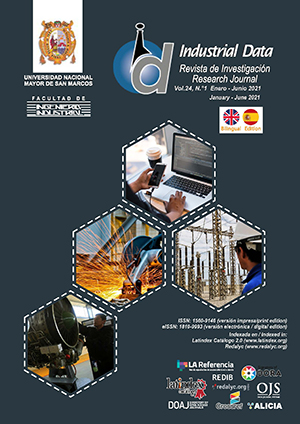Modeling the Monthly Average of the Quota Values per AFP and Type 2 Fund with the Box and Jenkins or ARIMA Methodology
DOI:
https://doi.org/10.15381/idata.v24i1.18930Keywords:
time series, profitability, weak stationarity, unit root, white noiseAbstract
The economic and financial crises in the world are recurrent due to the presentation of different patterns. These crises have affected the returns of the private pension system in Peru and there were no effective responses from the Pension Fund Administrators (AFPs). By using the Box and Jenkins or Autoregressive Integrated Moving Average (ARIMA) methodology, the behavior of the monthly average returns of the daily quota values of the type 2 fund—which began in December 2005—of each AFP can be described and forecast. Type 2 funds are distributed 55% in fixed income and 45% in equities, with a balanced profile destined for workers between 45 and 60 years old. The data type of the monthly average returns of the type 2 fund corresponds to the weak stationary time series, since the first moments such as the mean and the variance and autocovariance are time‑invariant.
Downloads
Published
Issue
Section
License
Copyright (c) 2021 Wilfredo Bazán Ramírez

This work is licensed under a Creative Commons Attribution 4.0 International License.
AUTHORS RETAIN THEIR RIGHTS:
a. Authors retain their trade mark rights and patent, and also on any process or procedure described in the article.
b. Authors retain their right to share, copy, distribute, perform and publicly communicate their article (eg, to place their article in an institutional repository or publish it in a book), with an acknowledgment of its initial publication in the INDUSTRIAL DATA.
c. Authors retain theirs right to make a subsequent publication of their work, to use the article or any part thereof (eg a compilation of his papers, lecture notes, thesis, or a book), always indicating the source of publication (the originator of the work, journal, volume, number and date).






